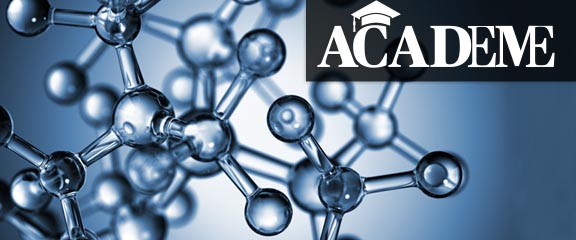In this fast-changing world, the key to progress lies in our ability to unleash the creative potential of our youth in order to develop strong knowledge economies. Pakistan, a country with a population of about 220 million, has about 110 million below the age of 20, and about 67 percent of our population is below the age of 30. To unleash this potential, we need to invest in education, science, technology and innovation. Amazing innovations are transforming our world at a mind-boggling pace. They are disrupting economies as conventional technologies recede into the past and are replaced by new products and processes. Take the field of biotechnology, for example. A gene-editing technique (CRISPR-CAS 9) has been developed, that allows genes to be spliced accurately. These “molecular scissors” are able to cut a certain section of a gene of a plant that endows that plant with certain properties (such as the colours of its flowers, or the taste of its fruits) and then these genes can be inserted into other plant species. While the process of natural evolution can take thousands of years for new species of plants or animals to develop, this can now be accomplished in the laboratory in a matter of weeks! Another application of biotechnology has been in the production of golden rice, which addresses the problem of vitamin A deficiency in children in developing countries. It has been estimated that about 200 million children and about 20 million women suffer from vitamin A deficiency in 122 countries, resulting in 1-2 million deaths annually and 500,000 cases of irreversible blindness. Swiss and German scientists have developed a new genetic variety of rice, named ‘Golden Rice,’ which contains provitamin A built into it. The latest variety of this rice, ‘Golden Rice 2,’ contains sufficient provitamin A to provide the daily requirement of vitamin A via consumption of some 75 grams of rice.
Why do you get mangoes only in the summer? The reason is that there is a certain biological clock built into every plant which tells the plant when to flower and when to fruit. In a collaborative study involving scientists from Peking University and Yale, it was found that the gene controlling the biological clock is the DET 1 gene. Turning such genes on could result in the round-the-year availability of off-season crops. This could have a major impact on the world food supply.
Some scientists have succeeded in inserting genes responsible for luminescence in deep-sea jellyfish and fireflies into orchids. The result is orchids which glow in the dark just as fireflies do. Others have combined these genes with spider proteins that stick to cancer cells and make them glow. This allows surgeons to identify cancerous cells easily. Obesity has also now been linked to certain genes and gene therapy is being developed to tackle obesity. The process of ageing is also now being understood in genetic terms and a number of genes have been identified that are involved in the ageing process. Research in this field has led to the discovery of a number of compounds that not only slow down the ageing process, but actually reverse it! These compounds include one (‘resveratrol’) found in peanuts, grapes and red wines. When given to mice it made old mice young again, even changing their body features. Another compound ‘metformin,’ an anti-diabetic drug, is dubbed as an “elixir of youth” as it was found to extend the life span in animals and prevent cancer. Its clinical testing is presently underway.
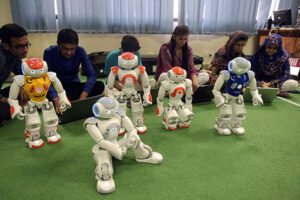
The blind can today see with their tongue. Actually we “see” with our brain — the eyes are only a mechanism for image transfer. Wicab, a Wisconsin based company, has developed a tiny camera that is fitted on glasses worn by a blind person. The optical images from it are converted into electrical images and then transferred to a lollipop device that has some 400 sensors. When the blind person places this “electronic lollipop” in his mouth, the image is transferred through the nerves in the tongue to the brain, restoring partial eyes sight. This allows hitherto blind persons to see lift buttons and distinguish between a knife and a fork.
Another area of intense research is that of new materials. A new class of materials, known as “metamaterials” have been developed that can bend light. Objects covered by such materials become invisible. They are now being used for cloaking submarines and tanks. Two Professors at Manchester university shared the Nobel Prize for chemistry in 2010 for discovering ‘graphene,’ a material made of pure carbon that is 200 times stronger than steel. Graphene is now finding a multitude of applications ranging from more powerful batteries, building materials and paper thin televisions to powerful computers and pharmaceuticals.
As the Federal Minister of Science & Technology in 2001, I persuaded the government to increase the development budget for science by about 6,000 percent. Later in 2002, when I was made the founding Chairman/Federal Minister of the Higher Education Commission, I managed to have the development budget for higher education increased also by some 3,500 percent. The allocation of substantially increased funds allowed us to undertake programmes to uplift the higher education sector. These programmes boosted research in universities and they can be broadly categorised as those related to access, quality, research/relevance and governance issues. Our primary focus was on the quality of higher education, rather than churning out large numbers of incompetent students, ill prepared for the market needs. All curricula were therefore revised and updated in consultation with relevant stakeholders in industry, agriculture, medicine, and academia. The revised curricula introduced were geared to meet the demands of the international and local market. New books were introduced and a digital library established under the Pakistan Educational Research Network (PERN) that provided free access to 65,000 text books and 25,000 international journals. A culture of quality research was introduced by training a very large number of our brightest students at the world’s leading universities and attracting them back to Pakistan through vastly improved salaries under a new Tenure Track Salary structure, jobs on arrival, liberal research funding and access to sophisticated instrumentation.
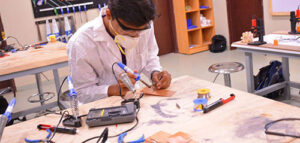
youth.
Some of the specific measures taken to improve quality were: 1) All PhD theses were evaluated only by eminent foreign scientists. 2) All PhD thesis and research papers were checked for plagiarism by introducing a powerful software (iThenticate or Turnitin) which brought a complete halt to the menace of plagiarism in PhD theses and research papers. Punitive action was initiated by HEC when this was detected. 3) Some 11,000 students were sent abroad to leading universities for PhD level training and they were absorbed as faculty members on their return, leading to a huge improvement in educational standards and increase in research publications. 4) The criteria for appointments and promotions at faculty positions were toughened and linked to the international stature of the applicants as judged from their international publications, patents and citations. 5) Quality Enhancement Cells were established in all universities for the first time in the history of the country. 6) Criteria for minimum requirements of faculty, facilities and infrastructure for establishments of new universities were approved by the Cabinet and enforced before giving Charters to new universities. The mushrooming of substandard universities and university campuses was stopped and many campuses closed down, which did not meet the minimum required criteria.
The results of these measures were astounding. We had never had a single Pakistani university in the top 500 of the world during the 56 year period 1947-2002, according to the Times Higher Education (UK) rankings. By 2008, within a short 6-year period, we had several universities ranked in the top 300-500 of the world, and numerous reports were written by neutral international experts calling the 6 year period 2002-2008 “the Golden Period” for higher education in Pakistan. This was made possible by the tremendous support to the higher education and science sectors from President Musharraf and the hard work of my colleagues at HEC.
The emphasis of quality education and research was applauded internationally. In an analysis of the scientific research productivity of Pakistan, in comparison to Brazil, Russia, India and China, Thomson Reuters, a reputable international agency, acknowledged that Pakistan had emerged as the country with the highest increase in the percentage of highly cited papers, in comparison to the “BRIC” countries, putting to shame a few critics and anti-national elements who tried their best to undermine these efforts. Many reports were also published by the World Bank, Royal Society (London), USAID, British Council as well as by UN agencies, all unanimous in quoting Pakistan as a model to be followed by developing countries.
The rapid progress made by Pakistan in the IT and telecom sector during 2000-2002 under my charge as Federal Minister led to the spread of internet from 29 cities in the year 2000 to 1000 cities, towns and villages by 2002, and the spread of fibre from 40 cities to 400 cities in this two year period. The internet prices were reduced sharply from $ 87,000 per month for a two MB line to only $ 900 per month. The mobile telephony boom began by the drastic lowering of prices, bringing in of competition (Ufone) and changing the system so that the person receiving a call was no longer required to pay any charges. A satellite was placed in space (Paksat 1). These changes in the IT infra-structure later proved invaluable for the business and Higher Education sectors.
The progress made in Pakistan during the short period between 2000 to 2008 rang alarm bells in India. On 23, July 2006, an article was published in the leading daily Indian newspaper Hindustan Times, entitled “Pak Threat to Indian Science.” It was reported that Prof. C.N.R. Rao (Chairman of the Indian Prime Minister’s Scientific Advisory Council) had made a detailed presentation to the Indian Prime Minister Mr. Manmohan Singh about the rapid strides that Pakistan was making in the higher education sector after the establishment of the Higher Education Commission in October 2002 and my appointment as its first Chairman. The article began with the sentence ““Pakistan may soon join China in giving India serious competition in science.” (http://www.highbeam.com/doc/1P3-1082216661.html), Neha Mehta, “Pak Threat to Indian Science,” Hindustan Times, 23 July 2006).
A number of new universities are now under development in Pakistan under my supervision. I had previously established or expanded over 20 universities that include COMSATS, NUST, Virtual University and Balochistan University of Information Technology and Management Sciences, to name a few. They are now among the leading institutions in the country. Our most exciting recent contribution is the Pak Austrian University of Applied Science and Engineering in Haripur, Hazara which has established close collaboration with no less than eight foreign universities, three from Austria and five from China. The university is probably the first “hybrid” university in the world involving three clear streams of activities. The first stream is that of the “Fachhochschule” which involves technical and engineering education at the Bachelors and Masters levels. A second stream is a postgraduate research stream with Centres of Excellence under development in several cutting-edge fields of engineering, including Artificial Intelligence, High Speed Railways Engineering, Advanced Agriculture, biomedical engineering and other emerging fields. The university will benefit from the training of its faculty and students by foreign partners. Students will not only be trained within Pakistan, but selected students will also undergo a part of their training in Austria and China. Ultimately some of the students will be able to get dual degrees, once the university operations have been accredited by accreditation agencies in Austria and China.
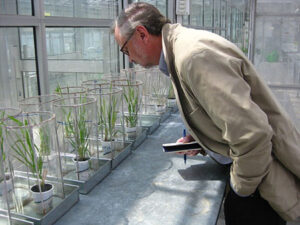
Muree, Pakistan.
But the most important stream of this university is focused on the activities of the Technology Park where a number of commercial products are already under development, although the university is only nine months old. So the success of this university and the performance of its faculty will be judged not just by how many research publications or PhD students it produces, but by the quality and number of products that are commercialised and the volume of income it generates for Pakistan. The integrated technology park will have Pakistani, Austrian and Chinese scientists and engineers working closely with industry in these countries, with the objective of developing new and novel products for commercialisation. The university has been provided liberal Research and Innovation funds to support the development of projects within the University and the Technology Park. A Business Development Centre with experts in business, including investment and exploitation of intellectual property rights, will assist in new commercialisation activities. The university has already started to function and was inaugurated by Prime Minister Imran Khan last summer.
Two other such universities with integrated technology parks are now under development in collaboration with foreign partners in industrialised countries. These are to be located in Sialkot and Islamabad. These new universities will set up new standards for our other universities in terms of excellence in teaching, research and innovation, and will spearhead the development of the new, heavily industrialised Pakistan. This has become possible because of the vision and support of our Prime Minister Imran Khan, who has ensured the availability of the requisite funds for these projects. I have also convinced the Prime Minister to invest more funds to the higher education sector. These efforts have led to an additional allocation of Rs. 15 billion, a 23 percent increase in the budget for higher education after years of stagnation, which has risen from Rs. 99.8 billion last year to Rs. 123.9 billion this year. Kudos to our Prime Minister Imran Khan!
I feel deeply humbled and honoured that in recognition of these contributions I have received the four Civil Awards of the Government of Pakistan, including the highest Civil Award, the Nishan-i-Imtiaz. I have also received the highest awards from China and Austria. Two major research institutions have been established in my honour in China (http://sciencedev.net/new-chinese-center-named-after-pakistani-scientist-atta-ur-rahman/) and Malaysia (https://aurins.uitm.edu.my/main/index.php/component/content/archive/2015/3). All this would not have been possible without the blessings of Almighty Allah, the prayers of my parents, and the dedicated teamwork of my students and colleagues.
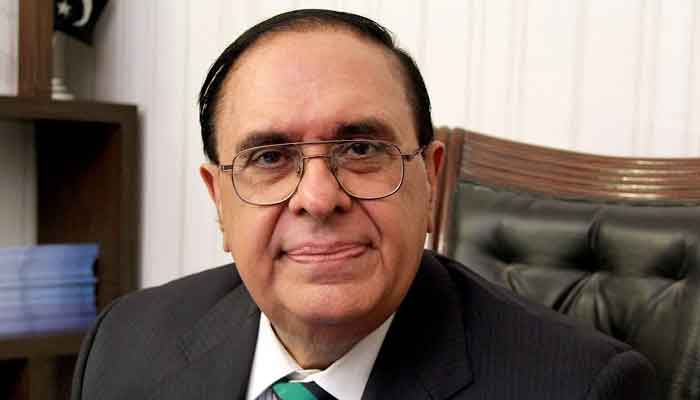
The writer is a Vice-chairman of the Prime Minister’s Task Force on Science & Technology.



